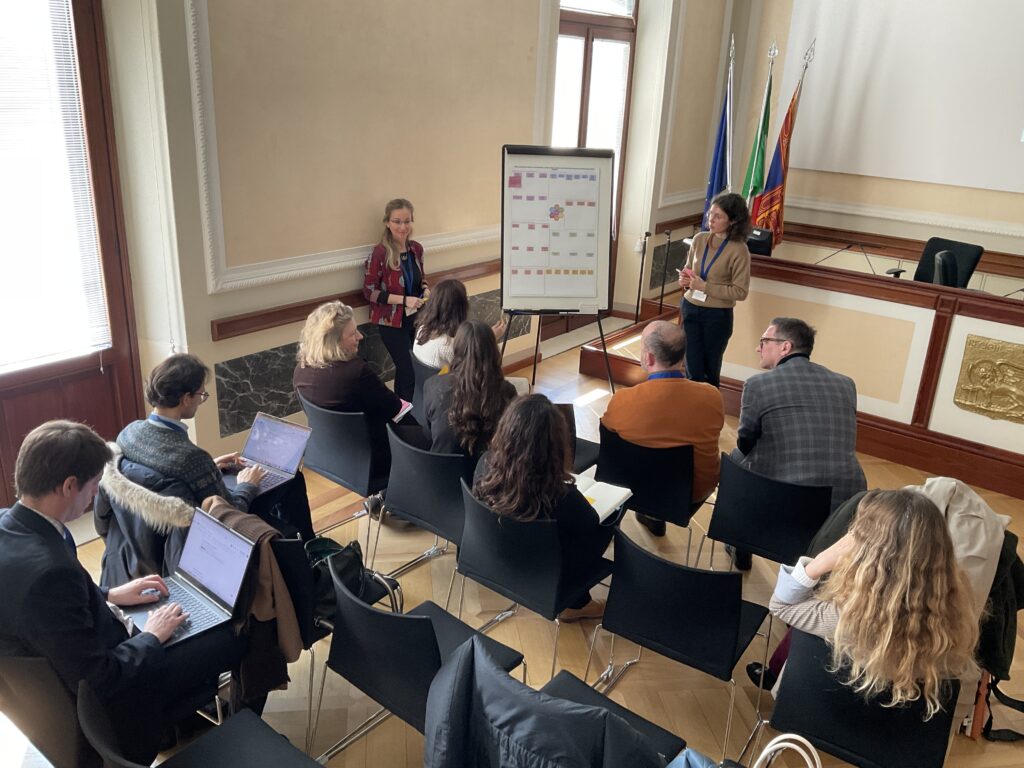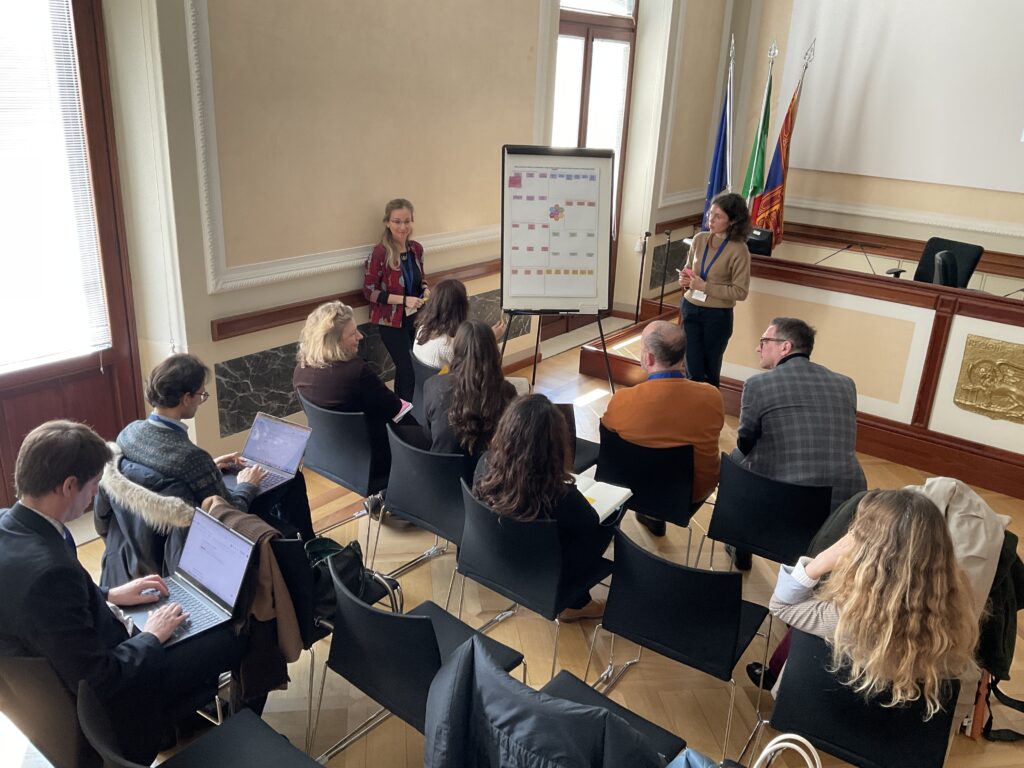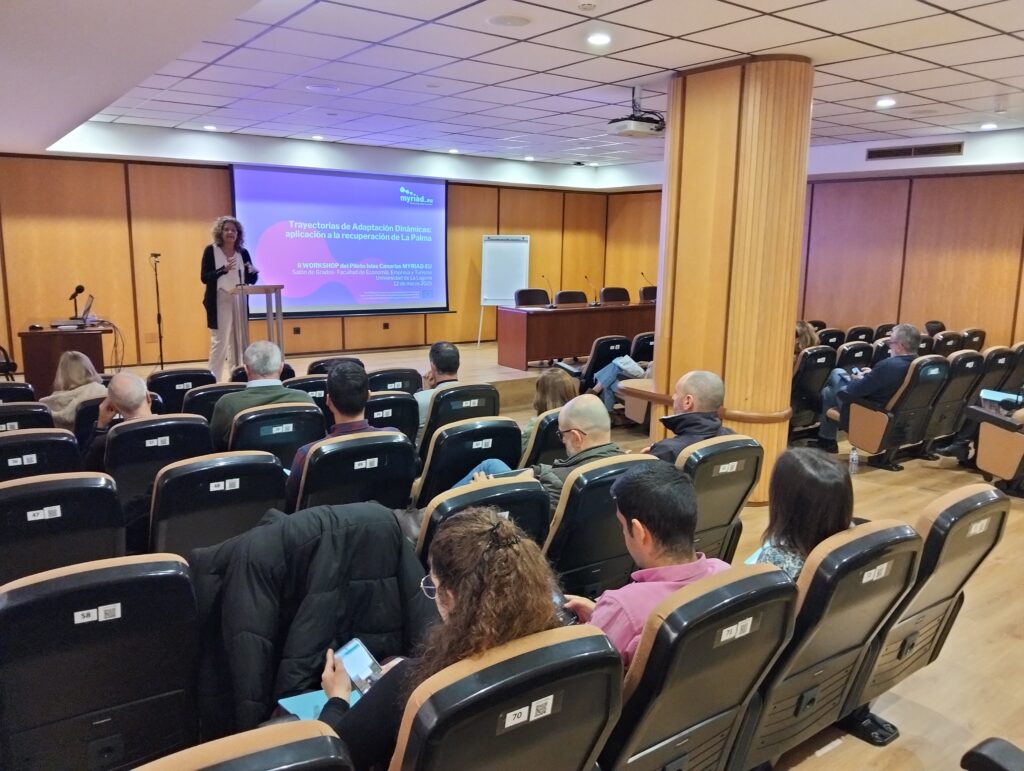
Final MYRIAD-EU pilot workshops conclude a four-year co-development journey embedding multi-risk approaches in Disaster Risk Management
MYRIAD-EU’s final round of pilot workshops culminated a four-year co-development process aimed at embedding multi-risk approaches in disaster risk management (DRM) and equipping local authorities and sectoral representatives with practical tools, insights, and methodologies.
The workshops took place between February and March 2025 across the five pilot regions and involved national, regional, and local authorities (e.g. environmental protection agencies, governmental bodies) as well as representatives from the private sector. These final events played a crucial role in establishing a legacy for the project and exploring the transferability of insights and methodologies to other regions. It emerged that the continuous exchange with local stakeholders over the years through focus groups, interviews, and bilateral meetings was not only essential for reinforcing awareness and scientific understanding of the importance of adopting a multi-risk approach in DRM, but also helped ensure that the tools were tailored to specific geographic and social realities, making the solutions more targeted and practical.
Each region brought a distinct focus and different risks in their final workshop.
North Sea and Scandinavia partnered for the final workshop where pilot teams shared the knowledge gathered over the last three years on multi-risks and multi-hazards, from both land and sea perspectives in Northern Europe. The event brought together participants from NGOs, government bodies, the private sector, and research institutions. Attendees, with interests in energy, agriculture, nature, shipping, and forestry, discussed the complexities of managing multi-hazards and multi-risks. Key challenges included knowledge gaps, difficulties in communicating risks to broad audiences, limited data availability, and the need to raise stakeholder awareness.
Veneto showcased outcomes from co-developing tools and strategies for managing multi-hazard risks. These included AI applications for assessing multi-hazard footprints, susceptibility mapping, river water quality, and coastal risks, as well as storylines on the Vaia storm and scenario-based DRM pathways using the UCPM Peer Review Assessment Framework. Stakeholder engagement ensured the development of practical, region-specific solutions. A roundtable discussion gathered reflections from regional authorities, setting the stage for the integration of MYRIAD-EU outputs into ongoing and future initiatives to strengthen DRM efforts across the Veneto Region.

Danube developed DRM pathways using the DAPP (Dynamic Adaptive Policy Pathways) and DAPP-MR approaches, focusing on the agriculture and navigation sectors. Stakeholders explored the effectiveness, sequencing, and interactions of DRM measures, including potential synergies and conflicts between sectors. A key feature of the workshop was the co-production of a multi-sectoral DAPP-MR. Stakeholders actively contributed to evaluating and sequencing measures, as well as identifying enablers like early warning systems and cross-border cooperation. This collaborative process ensured the resulting pathways reflected diverse perspectives, practical insights, and regional needs.
Canary Islands brought together over 20 stakeholders from tourism, agriculture, energy, water, and governance sectors. The event marked a key milestone in developing DAPP-MR approaches and testing a new multi-hazard simulation tool tailored to La Palma’s unique risks in the context of the MYRIAD-EU Multi-Risk Software Suite. Stakeholders provided valuable feedback on the DAPP methodology, highlighting its strengths and emphasizing its strong potential to guide strategic planning within their respective sectors.

While stakeholders played a central role in shaping decision-making tools, ensuring the long-term sustainability and uptake of MYRIAD-EU’s outputs has become a key focus in the final phase of the project. To support this, the project has established several mechanisms to integrate its tools and insights into ongoing practices and institutional frameworks.
Across all pilot regions, partnerships with local authorities, research centres, and civil protection agencies have helped lay the foundation for applying multi-risks approaches beyond the project’s lifespan. In particular, project partners co-developed tailored guidance documents and open-access digital platforms (e.g. Disaster Risk Gateway and the MYRIAD-EU Dashboard) to support continued use and adaptation of MYRIAD-EU tools. At European level, they have also engaged with policy-makers and international networks to facilitate knowledge transfer and foster synergies with related initiatives (e.g. PARATUS, MEDiate, The HuT, C2IMPRESS).
By anchoring project outputs in both local implementation and broader practice and policy efforts, MYRIAD-EU is contributing to a more resilient and integrated approach to managing multi-risk landscapes across Europe.
